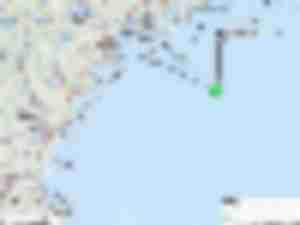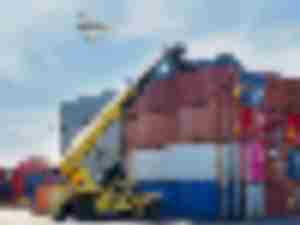Growing flood threat to US infrastructure: First Street
A new report “The 3rd National Risk Assessment: Infrastructure on the Brink”, found that there is a growing risk of flooding and major disruptions to U.S. infrastructure.
AgTC hears of new sailing to Oakland as exporters navigate booking and equipment challenges
The Agriculture Transportation Coalition’s (AgTC) virtual convention heard Executive Director Peter Friedmann underscore the continued frustration that U.S. agricultural exporters experience booking space for export containers from ocean carriers.
Maine submits application for nation’s first floating offshore wind farm
On October 1st, Maine’s Governor’s Energy Office (GEO) submitted an application to the Bureau of Ocean Energy Management (BOEM) to lease a 15.2-square-mile area nearly 30 miles offshore in the Gulf of Maine for the nation’s first floating offshore wind research site in federal waters.
FourKites data on Ports of Los Angeles and Long Beach show import spike
The load count in the months of July and August at the Ports of Long Beach and Los Angeles have witnessed an all-time high for the current year.
TGS’ Schneider and Port of Oakland’s Brandes urge ocean carriers return to Oakland
The recent decision by ocean carriers to reduce vessel service at the Port of Oakland and send more vessels to the Ports of Los Angeles and Long Beach has negatively impacted U.S. agricultural exporters in the middle of the harvest.
California Propeller Clubs’ meeting focuses on railroads’ impact on California ports
The Propeller Clubs of Northern California and of Los Angeles and Long Beach convened a joint forum to discuss the impact of U.S. railroads on California ports.
LA’s Seroka expresses support for Ag exporters but cites challenges
Port of Los Angeles executive director, Gene Seroka, supports U.S. agricultural exporter efforts to increase export bookings on global ocean carriers, but cites challenges related to the recent import volume surge.
2021 has felt like one big peak season: a global shipping market update
Mike Short, president of Global Forwarding at C.H. Robinson, shares an update on the current global shipping market and insights into how shippers can prepare for this historical peak season.
Shipping delays agitate medical supply chain woes
Michael Einhorn, President and CEO of Dealmed disscusses how critical commercial trucking is to keeping supply chains open for medical supplies while COVID continues to surge, and offers insight on how to remedy the issue and prevent the medical supply chain crisis from growing.
Ag Associations send another urgent plea to President Biden
This morning, over 70 agriculture associations delivered another urgent plea for intervention to President Biden, USDA Secretary Vilsack, Secretary of Transportation Buttigieg, FMC Chair Maffei, the Chair of White House Council of Economic Advisors, and the US Attorney General.
© Copyright 1999–2025 American Journal of Transportation. All Rights Reserved










